A Conversation with Bruce Duffie
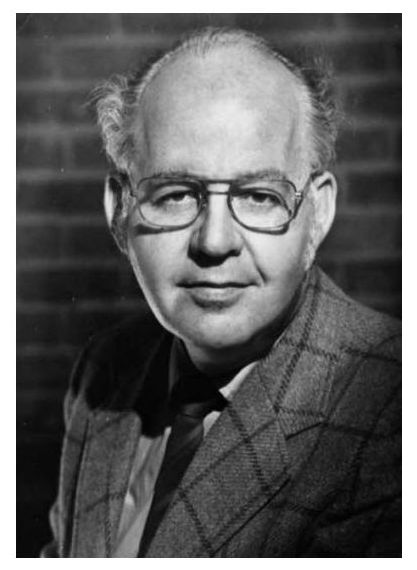

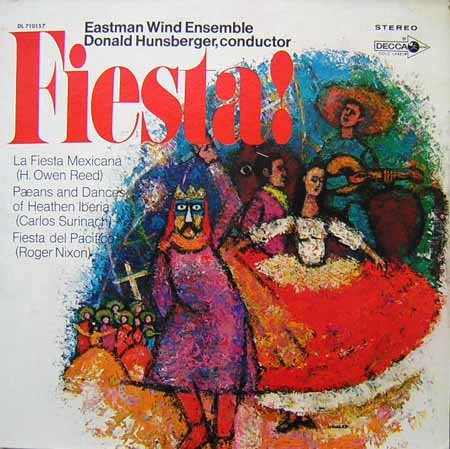 Roger Alfred Nixon (August 8, 1921 – October 13, 2009) was an
American composer, and professor of music. He wrote over 60 compositions
for orchestra, band, choir, and opera. He received multiple awards and
honors for his works, many of which contain a feel of the rhythms and
dances of the early settlers of his native state of California.
Roger Alfred Nixon (August 8, 1921 – October 13, 2009) was an
American composer, and professor of music. He wrote over 60 compositions
for orchestra, band, choir, and opera. He received multiple awards and
honors for his works, many of which contain a feel of the rhythms and
dances of the early settlers of his native state of California. Nixon was born and raised in California's Central Valley towns of Tulare and Modesto. He attended Modesto Junior College from 1938–1940 where he studied clarinet with Frank Mancini, formerly of John Philip Sousa's band. He continued his studies at UC Berkeley, majoring in composition and receiving a Bachelor of Arts degree in 1941. His studies were then interrupted by almost four years of active duty in the Navy during World War II, serving as the commanding officer of an LCMR [an omni-directional radar system] in the Atlantic. Following the war Nixon returned to UC Berkeley, first receiving a M.A. degree and later a Ph.D. His primary teacher was Roger Sessions. He also studied with Arthur Bliss, Ernest Bloch, Charles Cushing, and Frederick Jacobi. In the summer of 1948, he studied privately with Arnold Schoenberg. From 1951 to 1959, Nixon was on the music faculty at Modesto Junior College. In 1960 he was then appointed to the faculty at San Francisco State College, now San Francisco State University, and began a long association with the Symphonic Band, which premiered many of his works. Most of Nixon's works are for band, but he has also composed for orchestra, chamber ensembles, solo piano, choral ensembles, as well as song cycles and an opera. His most popular and most-performed work is Fiesta del Pacifico, a piece for concert band. [Nixon commended the recording shown at left. Also, see my interview with Carlos Surinach.] Nixon received several awards including a Phelan Award, the Neil A. Kjos Memorial Award, and five grants from the National Endowment for the Arts. He was elected to the American Bandmasters Association in 1973, the same year he won the association's Ostwald Award for his composition Festival Fanfare March. In 1997, Nixon was honored by the Texas Bandmasters Association as a Heritage American Composer. At his death, he was Professor Emeritus of Music at San Francisco State University. |
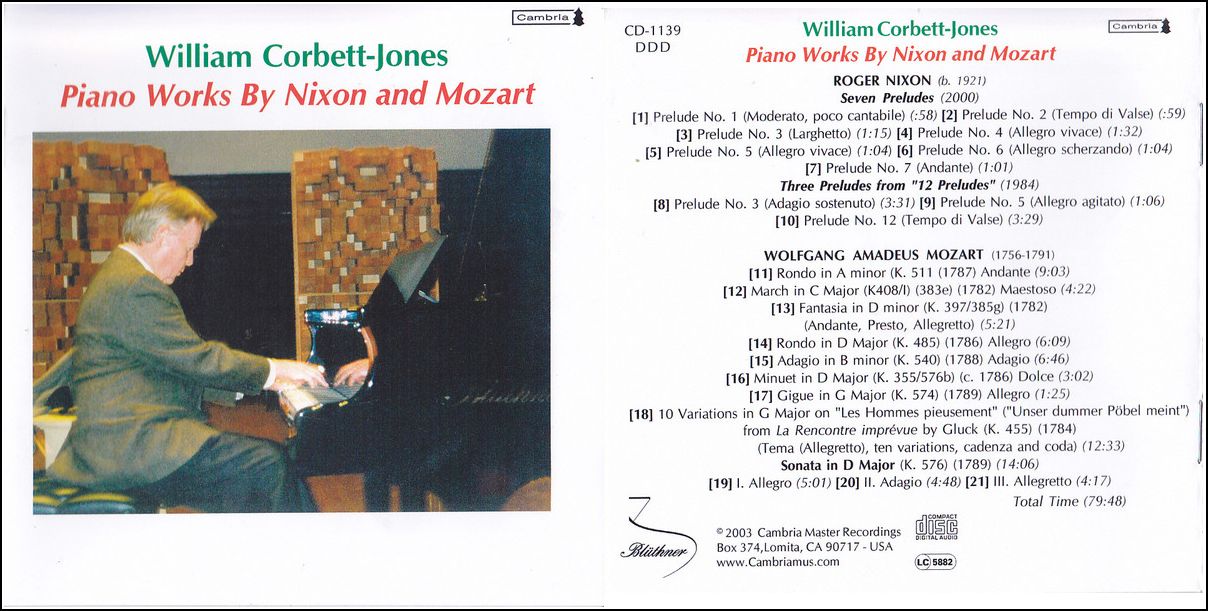
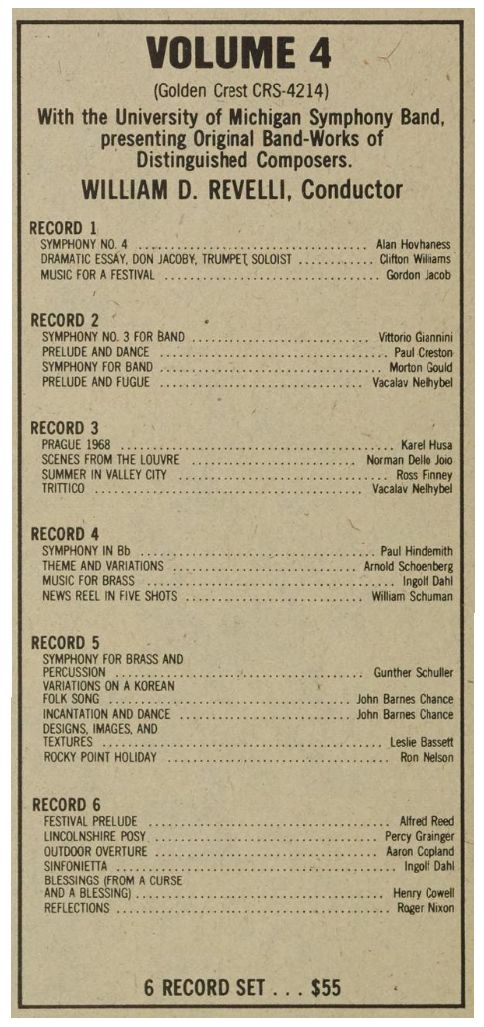 BD: You’ve done some teaching of music.
Is this theory and composition?
BD: You’ve done some teaching of music.
Is this theory and composition?[Vis-à-vis the recording shown at right, Nixon is in great company. See my interviews with William Revelli, Alan Hovhaness, Morton Gould, Vaclav Nelhybel, Karel Husa, Norman Dello Joio, Ross Lee Finney, William Schuman, Gunther Schuller, Leslie Bassett, Ron Nelson, and Alfred Reed. The Fiesta del Pacifico is included in Volume 1, another six-record set which features a similar group of composers as in Volume 4, including Vincent Persichetti.]
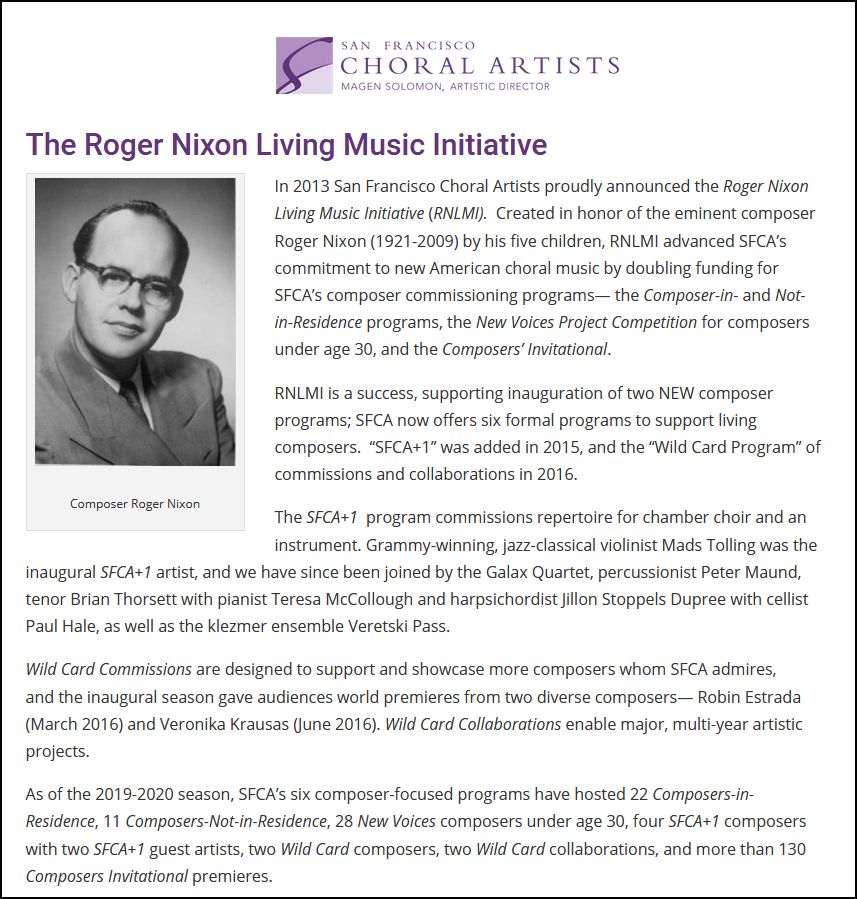
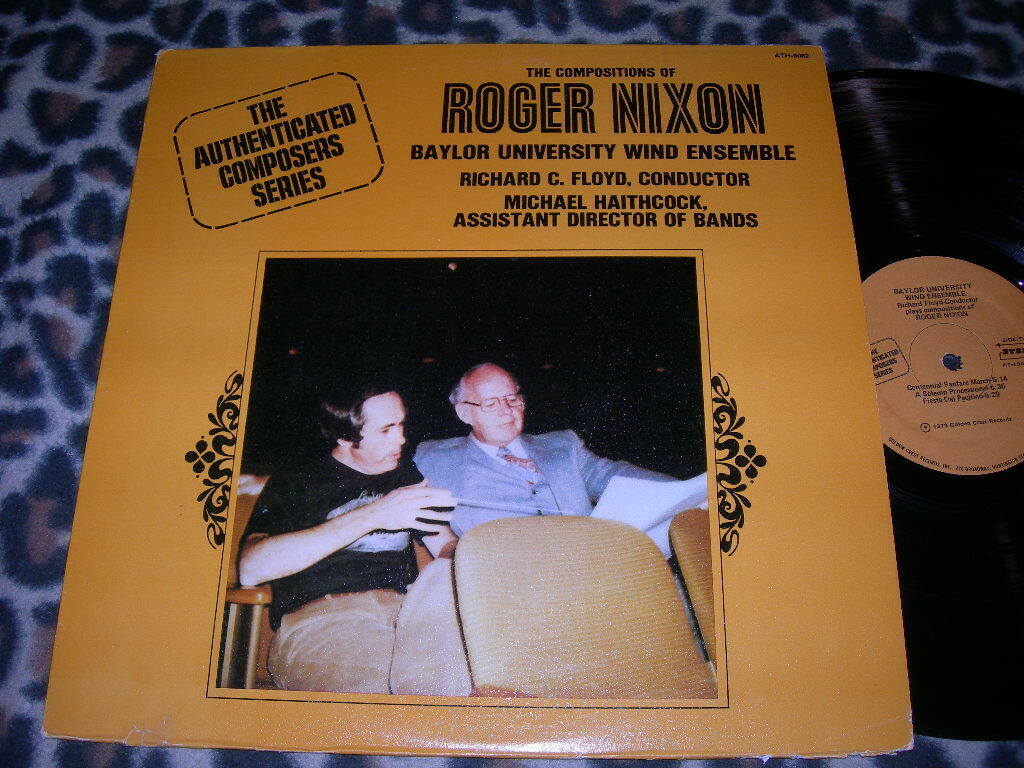
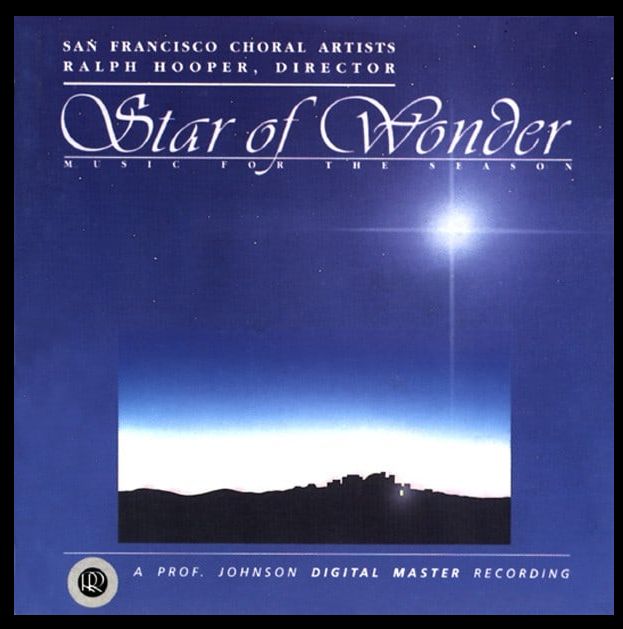 BD: What about the couple of Christmas pieces that you
sent me?
BD: What about the couple of Christmas pieces that you
sent me?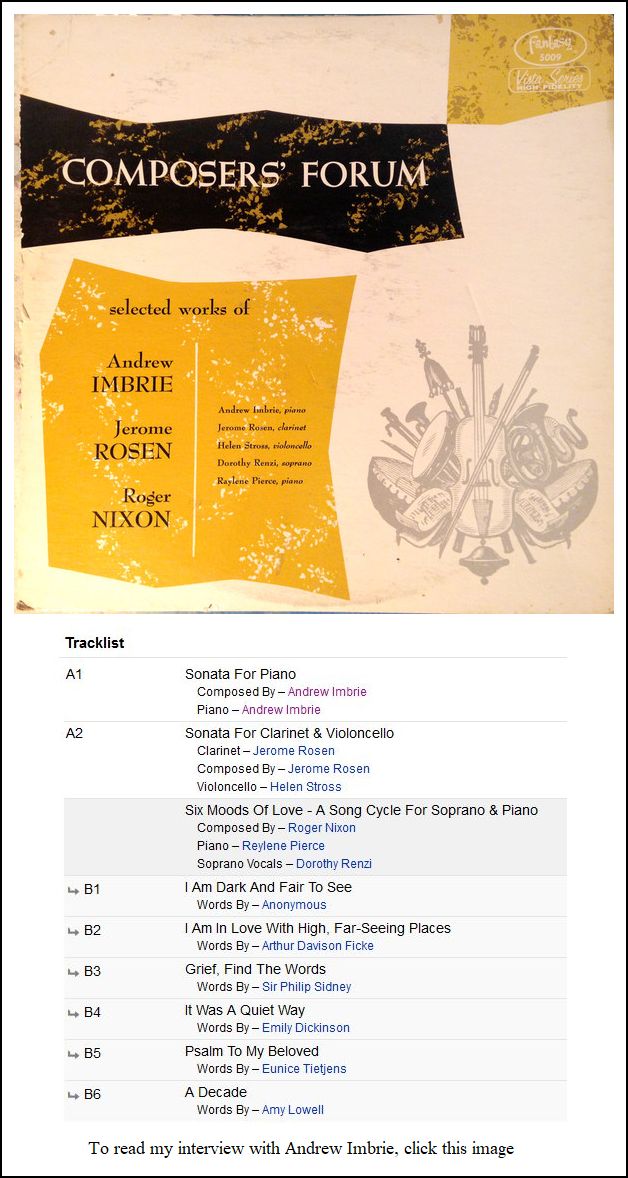 Nixon: Oh, yes, very much. That’s very impressive.
In the abstract, I suppose it would be the ideal medium for it. The
only thing about television is that you do have the electronic reproduction,
and you don’t get the live performance. Being in San Francisco,
I hear lots of opera. We have the San Francisco Opera, which is very,
very fine. It’s one of the finest in the world, and I really enjoy
their live performances. I can hear much more of the orchestra than
when somebody’s turning knobs in a studio. It’s also much clearer.
It’s the difference between looking at the reproduction of a painting and
looking at the original. You can really see more when you see the
original than you can from a reproduction, even though the reproductions
can be quite fine. They are certainly wonderful if you can’t have
the original. [Laughs] It is better to have a good reproduction.
This is the way I feel about television, but that’s because of the
appalling sound. In terms of the dramatic impact, the television is
really better because you can see the performance close up, but the music
suffers. The sound of the music suffers because of the speakers in
your home, and everything that has to do with electronic reproduction.
Nixon: Oh, yes, very much. That’s very impressive.
In the abstract, I suppose it would be the ideal medium for it. The
only thing about television is that you do have the electronic reproduction,
and you don’t get the live performance. Being in San Francisco,
I hear lots of opera. We have the San Francisco Opera, which is very,
very fine. It’s one of the finest in the world, and I really enjoy
their live performances. I can hear much more of the orchestra than
when somebody’s turning knobs in a studio. It’s also much clearer.
It’s the difference between looking at the reproduction of a painting and
looking at the original. You can really see more when you see the
original than you can from a reproduction, even though the reproductions
can be quite fine. They are certainly wonderful if you can’t have
the original. [Laughs] It is better to have a good reproduction.
This is the way I feel about television, but that’s because of the
appalling sound. In terms of the dramatic impact, the television is
really better because you can see the performance close up, but the music
suffers. The sound of the music suffers because of the speakers in
your home, and everything that has to do with electronic reproduction.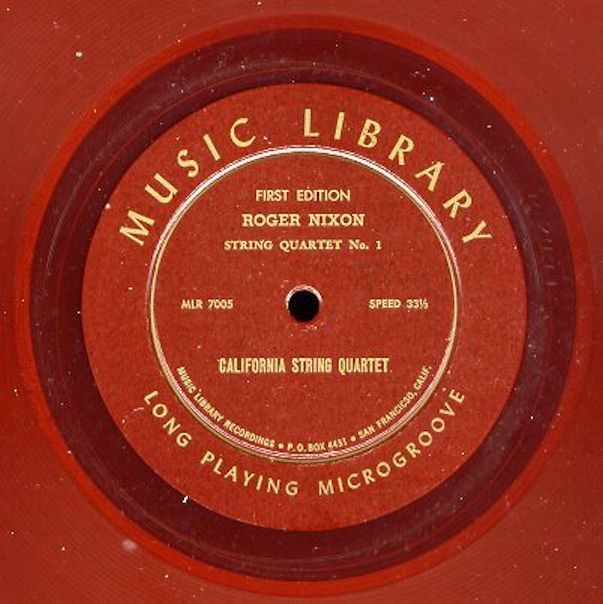 Nixon: One piece on a program is not too much to ask, but if
they came to a symphony concert hoping to hear a symphony played, they
bought their ticket, and if the whole program would be unfamiliar to them,
I think they would be disappointed, and that would be too bad. I don’t
think they should be betrayed that way. If they want to hear Brahms,
they should hear Brahms. I would never want to have a piece of mine
used to display something the audience ought to hear because it was good
for them. If we’re going to have a concert of contemporary music, it
should be advertised as that, and people should know what they’re getting
before they buy their ticket. They shouldn’t buy their ticket to hear
one thing, and then be confronted with another.
Nixon: One piece on a program is not too much to ask, but if
they came to a symphony concert hoping to hear a symphony played, they
bought their ticket, and if the whole program would be unfamiliar to them,
I think they would be disappointed, and that would be too bad. I don’t
think they should be betrayed that way. If they want to hear Brahms,
they should hear Brahms. I would never want to have a piece of mine
used to display something the audience ought to hear because it was good
for them. If we’re going to have a concert of contemporary music, it
should be advertised as that, and people should know what they’re getting
before they buy their ticket. They shouldn’t buy their ticket to hear
one thing, and then be confronted with another.|
The received wisdom on Schonberg’s groundbreaking Chamber Symphony No. 1 is that it is all about an approach to concision and brevity, an act of ruthless, purifying compression in reaction to the late-Romantic giganticism represented by Mahler’s symphonies and Schoenberg’s own Gurre-Lieder and Pelleas and Melisande, among many others. Schoenberg pared the grandiose orchestral forces down to 15 solo instruments and encapsulated the standard multi-movement symphony into a single composite movement. That was the form in which the Chamber Symphony, completed while vacationing in Bavaria in July 1906, had its premiere in February 1907, and it is in that form that it became a modernist icon, inspiring many similar works. With its thematic use of superimposed fourths and whole-tone scales that worked vertically (harmonically) as well as horizontally (melodically), the work became a famous pointer to the future, a harbinger of things to come for Schoenberg and much of 20th-century music. Yet the work looks backward as much as forward, something brought out more clearly when Schoenberg arranged it for full orchestra in 1935. This was a period during his early years in Los Angeles in which the composer reflected on the relationship of his own style with music of the past, arranging and adapting works by Monn and Handel, and two years later the Brahms Piano Quartet, and writing the Suite “in Old Style.” Schoenberg conducted the Los Angeles Philharmonic in the world premiere of the full orchestra version of the Chamber Symphony in a program of his own music, December 27, 1935, in Bovard Auditorium at USC, where the composer was then lecturing. (The other works on the program were the Suite and Verklärte Nacht as arranged for string orchestra. The Chamber Symphony, incidentally, was listed then as Op. 9-A.) And the brevity of the Chamber Symphony is relative to other
contemporary works, including Schoenberg’s Pelleas and Melisande
and his D-minor String Quartet, both also in a single movement.
(The Chamber Symphony is longer than many whole multi-movement symphonies
by Haydn and Mozart.) Schoenberg cites Liszt as an inspiration for the
idea of an encapsulated form (and Liszt was following the model of Schubert’s
“Wanderer” Fantasy). In the Chamber Symphony, this single
movement is subdivided into five very distinct parts, though they are
played without a break. -- From (recent) program notes for the Los Angeles
Philharmonic by John Henken, Director of Publications for the L.A. Philharmonic
* * *
* *
Alfred Wallenstein (October 7, 1898 – February 8, 1983) was an American cellist and conductor, born in Chicago, Illinois. At the age of 17, he joined the San Francisco Symphony as a cellist. He subsequently played cello with the Los Angeles Philharmonic, and the Chicago Symphony Orchestra before becoming principal cello of the New York Philharmonic under Arturo Toscanini in 1929. He frequently performed with these orchestras as a soloist. Toscanini, also a cellist, advised Wallenstein to become a conductor. He conducted the Hollywood Bowl Orchestra, and then conducted frequently on the radio. From 1943 to 1956, he was music director of the Los Angeles Philharmonic. He later taught at the Juilliard School in New York, where he died in 1983 at the age of 84. |
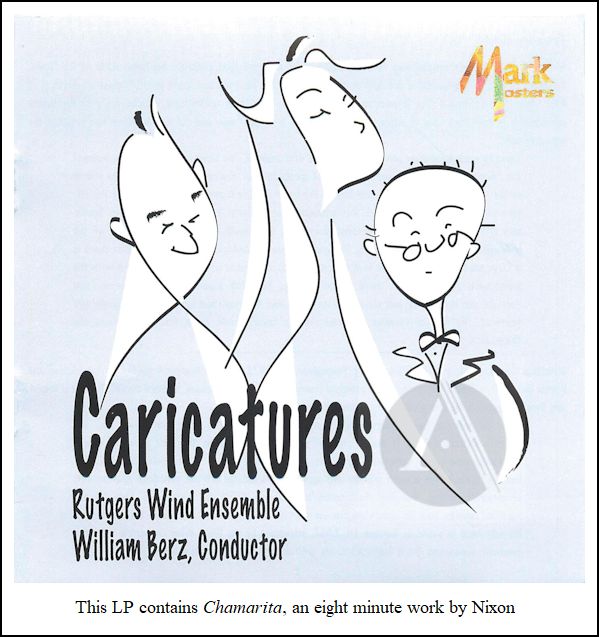 Nixon: I try to encourage their creative spirit, and I try
to encourage them to make their way in the world so that they can provide
space for their own artistic development. Often times, composers
are forced to write entertainment music, or educational music, or music
to be used for this or that or the other thing which, in a way, emasculates
at least part of their creative potential, and that’s unfortunate.
I try to warn them about that, and let them see various ways in which they
will be able to function by precept as well as by observation.
Nixon: I try to encourage their creative spirit, and I try
to encourage them to make their way in the world so that they can provide
space for their own artistic development. Often times, composers
are forced to write entertainment music, or educational music, or music
to be used for this or that or the other thing which, in a way, emasculates
at least part of their creative potential, and that’s unfortunate.
I try to warn them about that, and let them see various ways in which they
will be able to function by precept as well as by observation.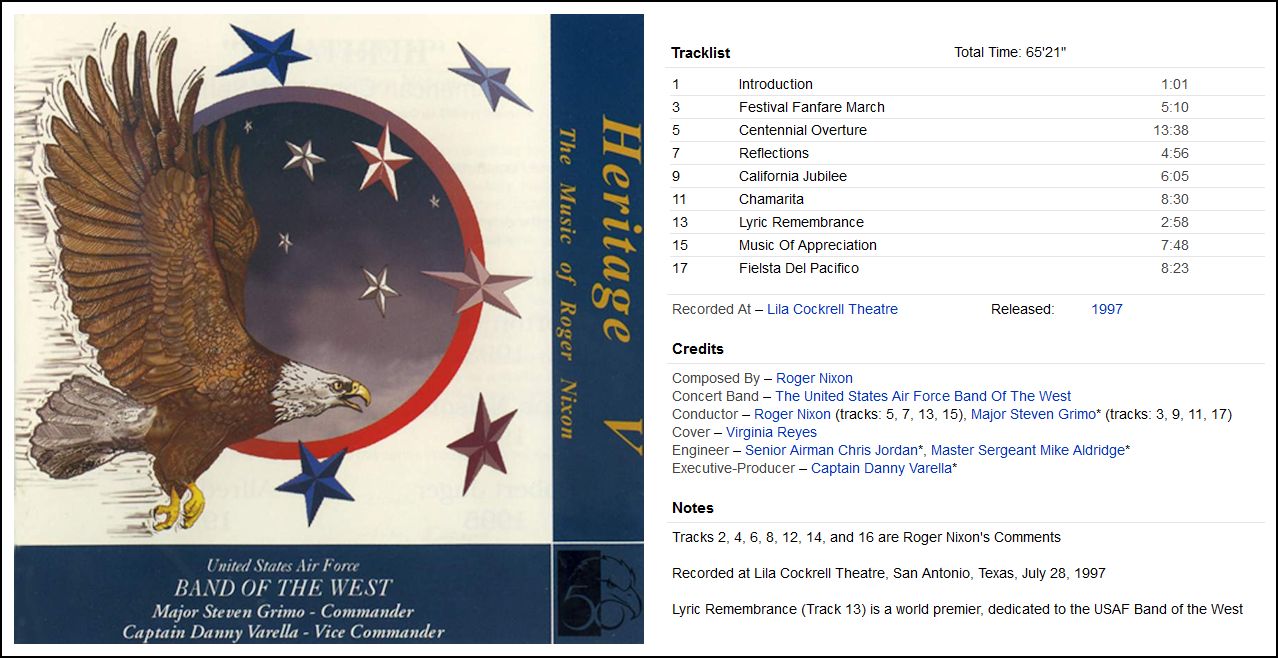
© 1988 Bruce Duffie
This conversation was recorded on the telephone on January 16, 1988. Because of this meeting, some of his music (without interview) was used as part of the in-flight programming aboard Delta Airlines the following September/October. A full program of music and interview was presented on WNIB in 1996. This transcription was made in 2019, and posted on this website early in 2020. My thanks to British soprano Una Barry for her help in preparing this website presentation.
To see a full list (with links) of interviews which have been transcribed and posted on this website, click here. To read my thoughts on editing these interviews for print, as well as a few other interesting observations, click here.
Award - winning broadcaster Bruce Duffie was with WNIB, Classical 97 in Chicago from 1975 until its final moment as a classical station in February of 2001. His interviews have also appeared in various magazines and journals since 1980, and he now continues his broadcast series on WNUR-FM, as well as on Contemporary Classical Internet Radio.
You are invited to visit his website for more information about his work, including selected transcripts of other interviews, plus a full list of his guests. He would also like to call your attention to the photos and information about his grandfather, who was a pioneer in the automotive field more than a century ago. You may also send him E-Mail with comments, questions and suggestions.